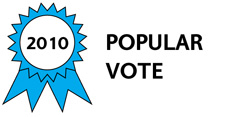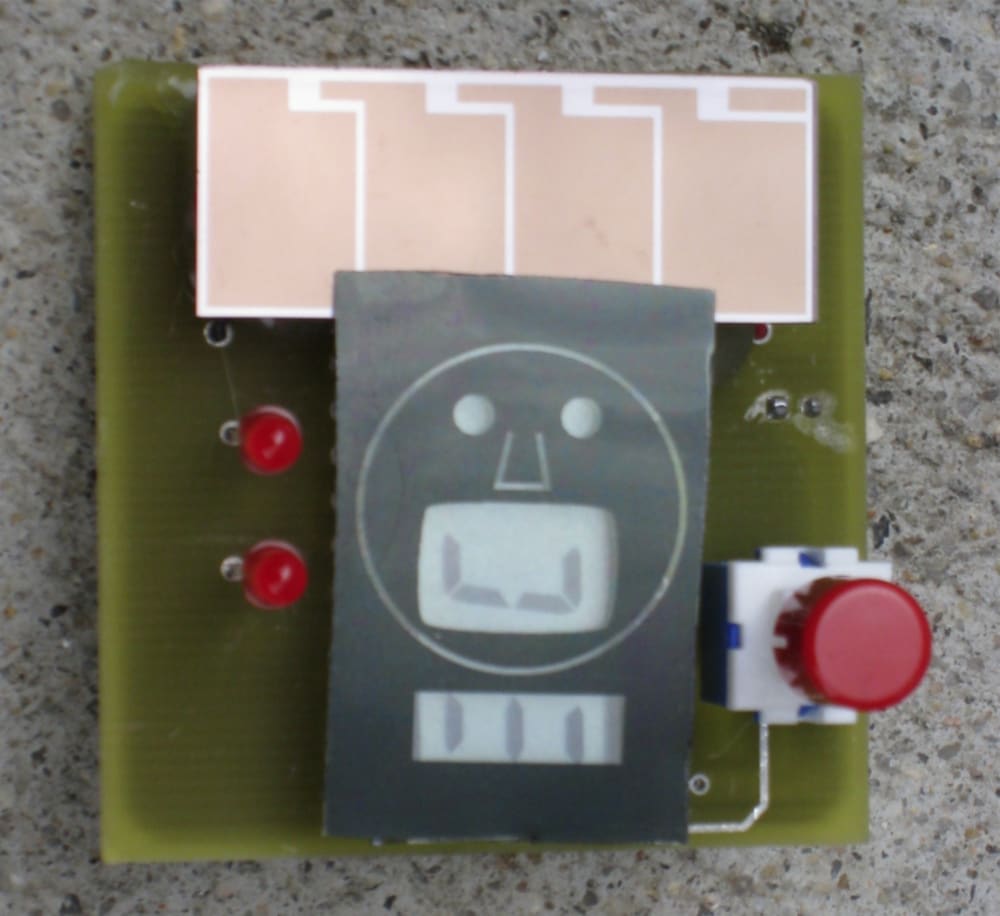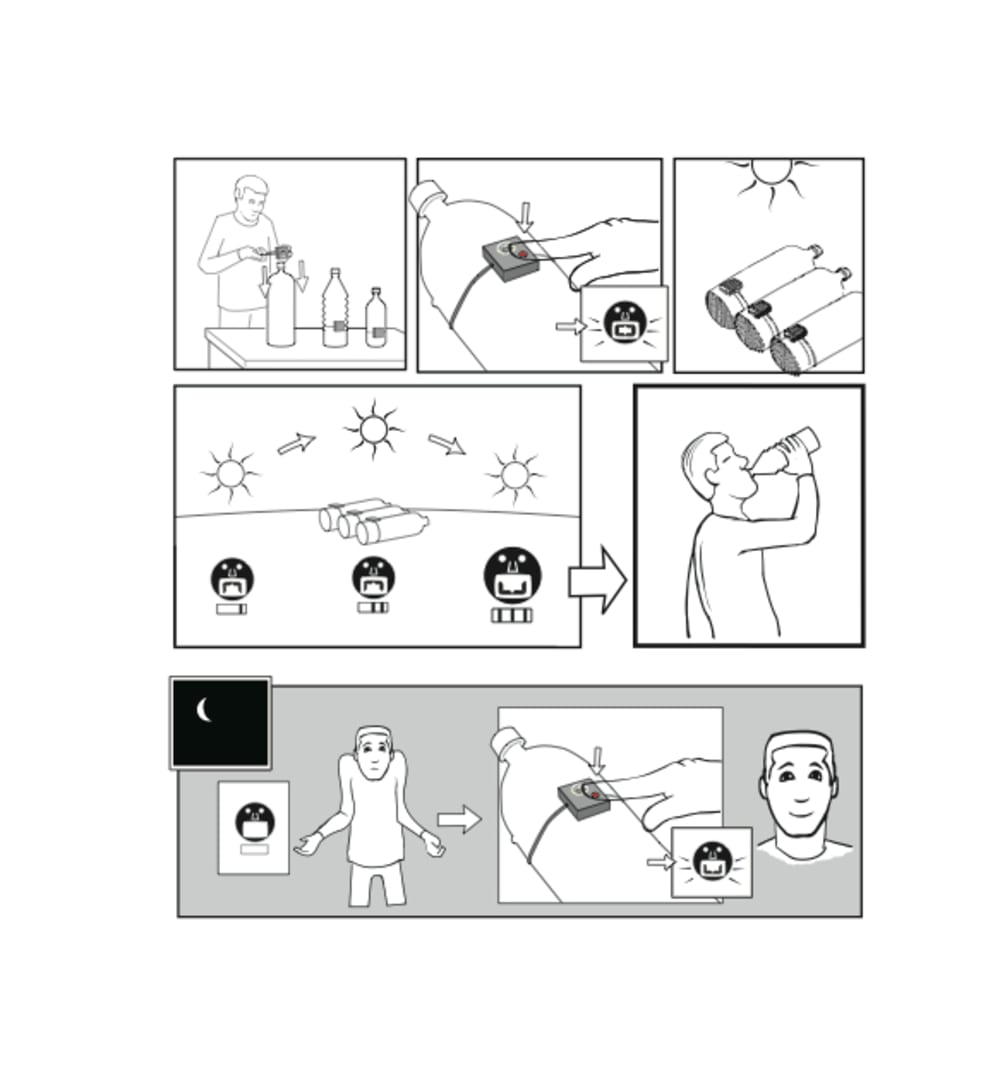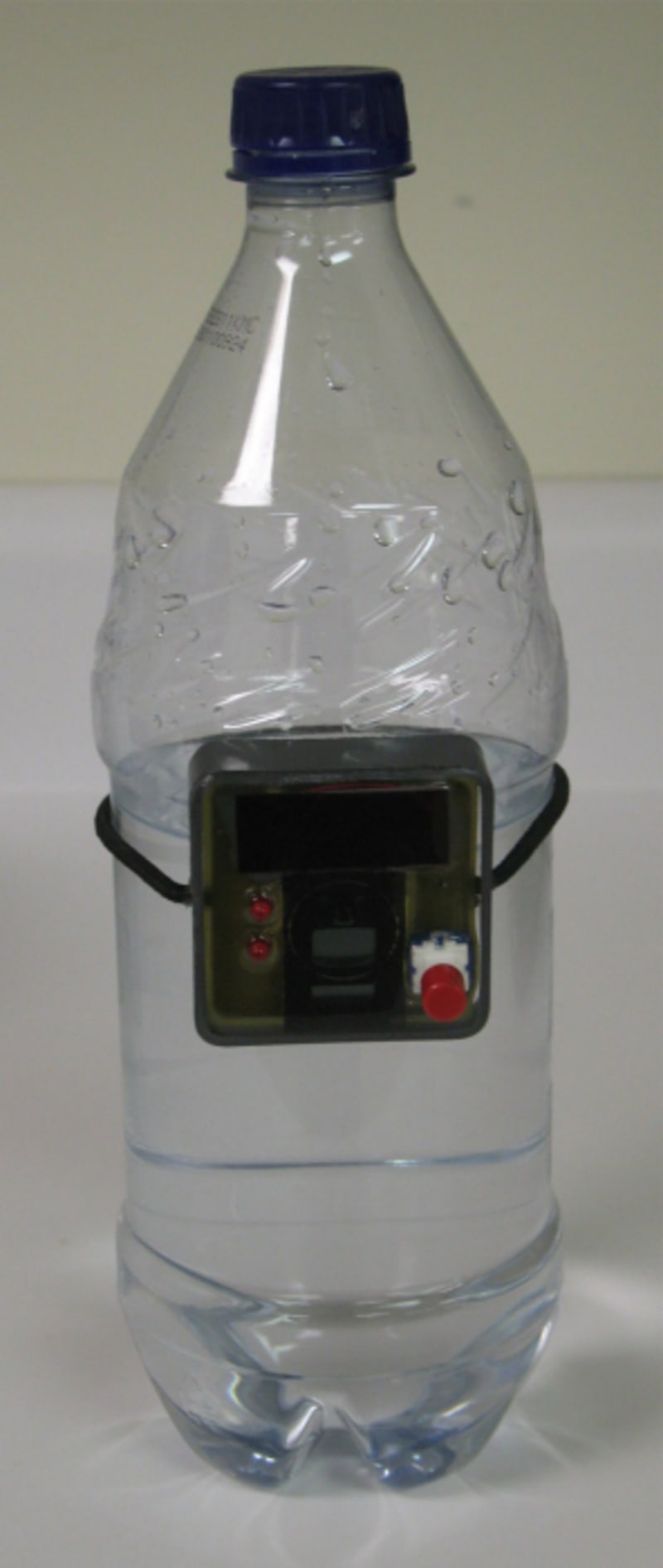
SODIS (solar disinfection) is a proven method of water treatment for the developing world that utilizes ultraviolet (UV) radiation from the sun to kill pathogens living in drinking water. All that is required is a clear plastic bottle, filled with contaminated water, to be exposed to direct sunlight for 6-8 hours. This method can make clean water an affordable reality for the more than one billion people across the world who currently lack access to safe drinking water.
However, the amount of time a bottle needs to be left out in the sun is dependent on the day's weather conditions - if it's cloudy, SODIS can take up to 2 days to disinfect water. This kind of procedural variability and the current lack of an indicator technology has inhibited the adoption of the SODIS method, as it requires the user both to pay attention to cloud coverage throughout the day and to be trained to apply these observations. Our novel and simple indicator technology addresses this barrier by monitoring incoming sunlight. When the water has been exposed to enough sunlight, the indicator communicates the water's readiness to the user via the universal "smiley face" symbol. This cross-cultural comprehensibility allows us to appeal to many different markets.
The indicator makes use of the most robust yet inexpensive components commercially available. It is attached to the bottle with a durable elastic band, setting the sensors underneath the bottle when it is on its side so as to measure radiation passing through the bottle. The technology is based on the repurposing of LEDs (light-emitting diodes) as photosensors; sunlight hitting LEDs generates an incident voltage that can be used to measure the intensity of the light. The signal from these LEDs is calibrated, recorded, and integrated over time to represent total radiation. Once the appropriate level of radiation has been achieved (in accordance with World Health Organization standards for potable water), the indicator's LCD (liquid crystal display) will depict a smiling face as well as three bars that illustrate progression towards sufficient sunlight exposure. Here, our technology uses a typical calculator's LCD to perform a different function. The indicator also makes use of a solar panel, which powers the LCD; the state of progression can also be checked at night through a switch that connects the indicator to battery power.
The current prototype's material cost is 5 USD (United States dollars) with a lifetime of 5 years. For a family of four that uses 20 liters of water a day, this translates to a cost of 0.4 cents per day; comparatively, chlorination costs up to 1 cent per day. The device will be marketed primarily to non-governmental organizations (NGOs) located in areas of need, who will help to spread the SODIS method as well as enable end-users to purchase our technology through microfinance programs. In doing so, we hope to help reduce the incidence of waterborne diseases globally and enable the billion most underserved people on the planet to lead healthier lives.
-
Awards
-
 2010 Top 10 Most Popular
2010 Top 10 Most Popular
Like this entry?
-
About the Entrant
- Name:Julie Xie
- Type of entry:teamTeam members:Chris Templeman
Sean Jeffries
Keegan Cooke
Julie Xie - Hardware used for this entry:Microchip PICkit 3, solar panel, LCD, LEDs, PIC microprocessorSoftware used for this entry:MPLAB IDE, Eagle
- Patent status:none








